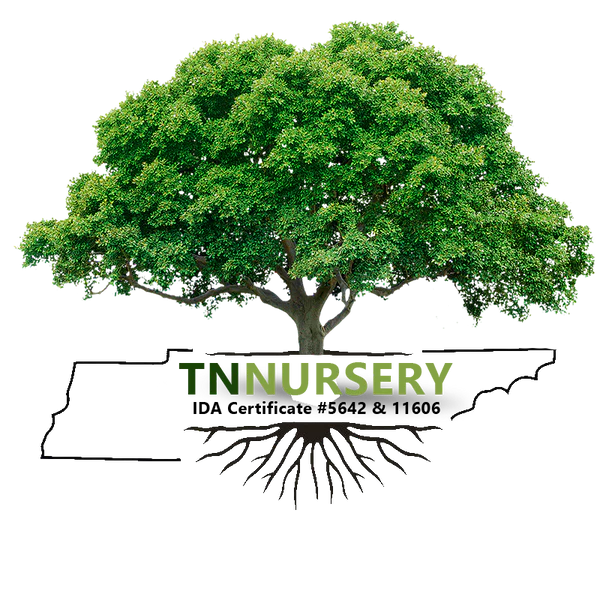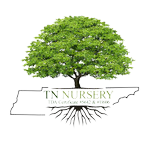Creating a unique landscape involves blending elements of design, aesthetics, and ecology to craft a harmonious environment that not only pleases the eye but also supports biodiversity and sustainability. Incorporating plants such as Elderberry Bush, Wisteria Tree, Appalachian Sedge, Mood Moss, and Virginia Bluebells offers an opportunity to create a captivating landscape that celebrates the beauty of nature while providing habitat and nourishment for local wildlife. Let's explore how to weave these elements together to craft a distinctive and enchanting landscape.
Understanding the Plants: Before diving into the creation method, it's crucial to understand the characteristics and requirements of each plant species.
Elderberry Bush (Sambucus spp.): Elderberry bushes are stunning deciduous shrubs with delicate and fragrant white flowers that add a touch of elegance to any garden. As the summer progresses, these bushes develop clusters of juicy and nutritious dark purple berries that are not only a treat for the eyes but also a favorite among birds and other wildlife. Elderberries thrive in moist, well-drained soils and prefer to bask in partial shade. Their ability to improve soil fertility, attract pollinators, and provide food for wildlife makes them a valuable addition to any garden.
Wisteria Tree (Wisteria spp.): Wisteria trees are a sight to behold, with their magnificent clusters of lavender-hued flowers cascading down like a waterfall. The fragrance of these flowers is mesmerizing and can fill the air with a delightful scent. These vines can be trained to climb trees or structures, creating a stunning vertical element in any landscape. When in full bloom, the Wisteria tree looks like a piece of art from a fairy tale. It requires adequate sunlight and well-drained soil to thrive and produce these breathtaking flowers.
Appalachian Sedge (Carex appalachica): Appalachian Sedge is a charming and graceful plant that resembles grass and grows in dense clumps. Its slender, arching foliage adds a unique texture to the landscape, swaying gently in the breeze. It thrives in moist and acidic soil, and its natural habitat is woodland settings. The Appalachian Sedge is a beautiful addition to any garden and provides a haven for small wildlife, making it an essential ecosystem component.
Mood Moss, scientifically known as Dicranum spp., is a stunning moss with a lush and velvety appearance. Its leaves are arranged in a beautiful star-like pattern, creating a mesmerizing effect. This Moss thrives in cool, damp, and shaded environments, where it can quickly spread and create a soft and fluffy carpet-like ground cover. Mood, Moss in landscaping, can add a touch of natural elegance and tranquility to any scene. Whether you're looking to create a serene Japanese garden, a fairy tale-inspired landscape, or a calming green oasis, the Mood Moss is a perfect choice.
Virginia Bluebells, scientifically known as Mertensia virginica, are enchanting herbaceous perennials that add a touch of dreaminess to any garden. In early spring, these magnificent plants produce clusters of bell-shaped flowers that flaunt a mesmerizing range of colors, from serene shades of blue to delicate hues of pink. Their alluring beauty is further accentuated by their lush green foliage, which contrasts sharply with their vibrant flowers. Virginia Bluebells thrive in moist, nutrient-rich soils and like partisan shade, making them an ideal choice for woodland and shade gardens. These charming plants are not just a treat for the eyes but are also highly valued for their role in attracting pollinators such as bees, butterflies, and hummingbirds. Virginia Bluebells are a must-have if you're looking to create a magical and functional garden.
Designing the Landscape: Now that we have a solid understanding of our plant palette, we can envision how these elements will form a unique landscape.
1. Creating Layers of Texture In Your Unique Landscape
We aim to make a spectacular landscape that is a sight to behold by incorporating various textures. We will use the cascading Wisteria Tree blooms to add a striking vertical element to the design, drawing the eye upwards. To create a lush green backdrop, we will utilize the dense foliage of the Elderberry Bushes. At ground level, we'll introduce the fine, grass-like texture of the Appalachian Sedge, providing a sense of movement and depth to the landscape. The soft, velvety appearance of the Mood Moss will add a hint of grace and peace to the overall design. Together, these textures will work harmoniously to create a visually stunning and engaging landscape that will captivate all who see it.
2. Establishing a Color Palette:
While each plant brings unique hues to the landscape, we'll aim for a cohesive color palette that harmonizes with the surrounding environment. The lavender blooms of the Wisteria Tree will contrast beautifully with the white flowers of the Elderberry Bushes, while the verdant greens of the foliage provide a natural backdrop. Virginia Bluebells will add pops of blue or pink in early spring, creating a sense of seasonality and transition.
3. Creating Visual Interest In Your Unique Landscape
Incorporating elements of asymmetry and irregularity will lend a naturalistic feel to the landscape. Rather than arranging plants in rigid, uniform rows, we'll embrace organic shapes and groupings that mimic the patterns found in nature. Clusters of Virginia Bluebells can dot the landscape, while drifts of Mood Moss create soft undulating forms that invite exploration.
4. Enhancing Wildlife Habitat:
A key consideration in designing a sustainable landscape is providing habitat and food sources for local wildlife. The Elderberry Bushes will attract birds with their nutritious berries, while the nectar-rich flowers of the Wisteria Tree and Virginia Bluebells will support pollinators such as bees and butterflies. Appalachian Sedge provides cover and nesting sites for small mammals and birds, contributing to the overall biodiversity of the landscape.
5. Embracing Seasonal Changes Of Your Unique Landscape
A thoughtfully designed landscape is a living canvas, constantly evolving and transforming with the changing seasons, offering something new to discover and appreciate throughout the year. In spring, the garden awakens from its slumber, bursting with life and color as the stunning Virginia Bluebells bloom and the delicate flowers of the Wisteria Tree sway in the breeze. As summer unfolds, the garden transforms into a lush oasis, with the foliage of the Elderberry Bushes deepening in color, providing a verdant backdrop for the garden. In the fall, the leaves of the trees may take on fiery red, orange, and gold hues, creating a dramatic and breathtaking display of nature's beauty. Finally, as winter approaches, the landscape prepares for its dormant season with the promise of renewal and the hope of another vibrant spring.
6. Cultivating a Sense of Tranquility:
We will meticulously craft the landscape design to evoke a sense of tranquility and invitation. The gentle rustling of the Appalachian Sedge in the breeze creates a soothing melody, while the dappled sunlight filtering through the foliage creates a picturesque, dreamlike ambiance. The soft, velvety texture of the Mood Moss underfoot provides a tactile element that further enhances the serene atmosphere. We will strategically place seating areas throughout the garden, inviting visitors to pause and fully engross themselves in the stunning attractiveness of their surroundings.
Incorporating Elderberry Bushes, Wisteria Trees, Appalachian Sedge, Mood Moss, and Virginia Bluebells into a landscape offers endless possibilities for creativity and expression. By understanding the unique characteristics of each plant species and designing with principles of texture, color, and habitat in mind, it's possible to create a truly unique and enchanting landscape that delights the senses and nurtures the soul. With careful planning and attention to detail, your landscape can become a living work of art that evolves and flourishes each season.


